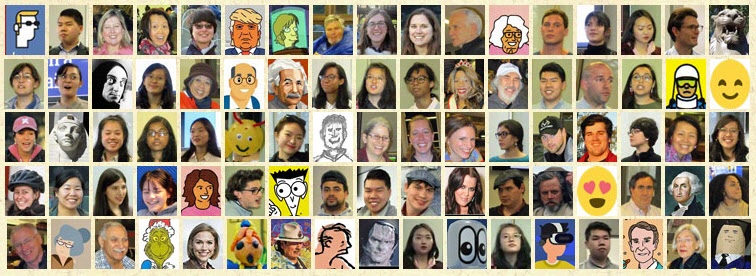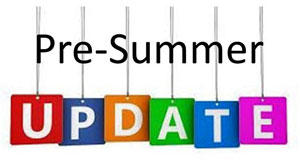
|
Design, Technology , and Engineering benefitting individuals
with disabilities and older adults in the local community |
June 9, 2022 |
|
|
|
|

Perspectives is the newsletter of the
Stanford course,
Perspectives in Assistive Technology.
Pre-Summer Update
This newsletter issue summaries last academic year's
course
and describes plans for the coming
year.
|
Perspectives in Assistive
Technology is a Winter Quarter Stanford course - recently completing its
sixteenth year - that explores the design, development, and use of
assistive technology that benefits people with disabilities and older adults.
It consists of semi-weekly in-person discussions; lectures by
notable professionals, clinicians, and assistive technology users; a
tour of an accessible inclusive playground; student project
presentations and demonstrations; and an Assistive Technology
Faire. |
Pre-Summer Update
Greetings to members of the Stanford's Assistive
Technology course community,
I hope you are doing well - being vaccinated and getting
boosted, staying healthy, and being safe - during this post-pandemic time. Over
the past several months, I have wrapped up the Winter Quarter Assistive
Technology course, including reading and marking up students' end-of-term
reports, submitting grades, and creating a few slideshows. While the course was
not completely in-person this year due to guest lecturers who were sick or
tested positive for COVID or preferred to present by Zoom, I am optimistic
about returning to a totally in-person course structure next year. Here is my
report on what has happened since the middle of of March and my thoughts for
the future.
Review of last academic
year's course
-
Thanks - First, I would like to thank everybody
who participated in the course as a student, a guest lecturer, an Assistive
Technology Faire vendor, a project partner, or an interested community member.
Your interest and contributions are much appreciated.
-
Students - This past academic year, the course
enrolled 44 students who attended in-person or zoomed in. Thirty-five worked on
team or individual projects. Here is a
slideshow of their projects and
some photographs from their
project demonstrations.
-
Comments - For the most part, the course went
well. I will be posting some student comments in the next few
weeks.
Plans for next year's
course
-
In-person instruction - Hopefully an improved
pandemic situation will allow all courses will be taught in-person. And I hope
that masking will not be required as covering up a portion of the face has made
it very difficult for me to identify enrolled students.
-
Course activities - In-person course activities
and features pursued next year include: team projects, community attendance in
class sessions, field trips, in-person Assistive Technology Faire, movie night,
and most importantly, chocolate chip cookies.
-
Classroom assignment - I hope that the classroom
I have used in 2019, 2020, and 2022 - Lathrop 282 - will be assigned to my
course once again. The room's moveable chairs and tables allow it to be
repurposed for specific events and is more accessible for wheelchair
users.
-
Course schedule - I plan to follow my standard
course strategy of inviting guest lecturers to present in class sessions. I do
not anticipate many new presenters. Contacting them, getting their available
dates, and scheduling the class sessions will occur over the next several
months.
Upcoming
solicitations
-
Project and Faire solicitations - In preparation
for the upcoming Winter Quarter course offering, I would like to begin to
solicit projects suggestions from community members now and Assistive
Technology Faire vendor participation in the futurer. Here are some project
criteria to consider:
- Team project suggestions must address a real challenge experienced by
an individual with a disability or older adult who lives in the local
community. The problem or struggle must be one that is not adequately served by
existing commercial products. (Perform an internet search to verify this.) It
is important to identify and describe the challenge rather than
imagine a solution.
- The scale of the project must be such that it could be pursued by a
team of three students in the 10-week quarter, resulting in a fabricated
functional prototype.
- Refer to Project
Requirements webpage for further information.
Here is an example project suggestion that should guide
your project suggestion thinking:
|
Example Project
Suggestion
| Title: |
Improved Pooper Scooper |
| Background: |
The intended user is an older adult who relies on her
powered wheelchair and service dog for mobility. |
| Problem: |
Current products are bulky, difficult to operate, and
are not designed for wheelchair users. |
| Aim: |
Explore designs for a device that will allow a
wheelchair user to effectively clean up after their service dog while remaining
active in their community. |
| Design Criteria: |
Compact to facilitate storage
Aesthetic
design
Easy to retrieve and store
Integrated waste disposal bag
Easy
to dispose bag
Easy to clean |
Examples of reacher products for inspiration:
Examples of pooper scooper products that are too
bulky:
|
Please contact me with your ideas, questions, comments,
and project suggestions - or just to say hello. Please continue to stay safe
& healthy.
Dave Jaffe - Course Instructor
|

To unsubscribe from this newsletter, please email
Dave. |
|



